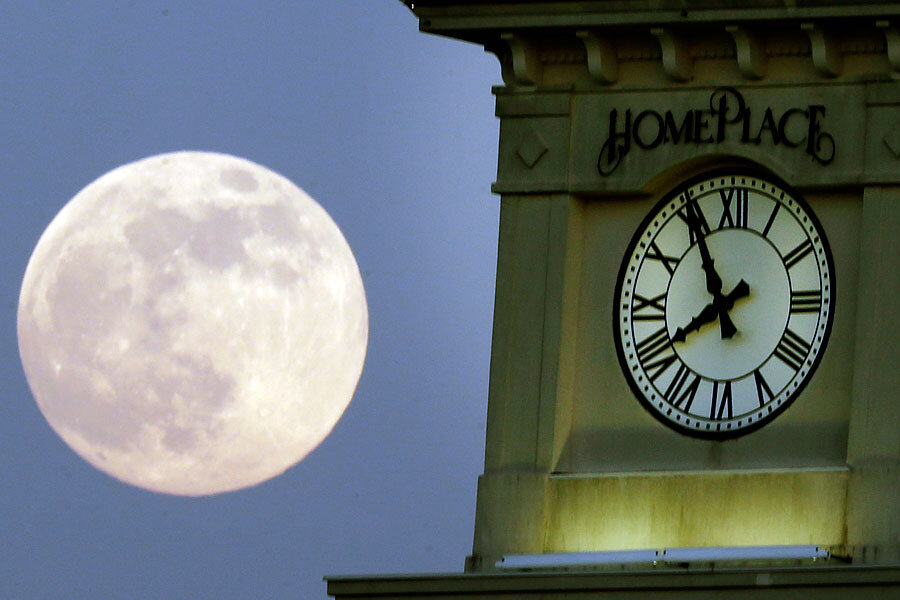So what is a 'supermoon' anyway?
Loading...
Look through a telescope, and you might notice that Saturday's full moon will be a bit bigger and brighter than a usual one. You might even call it a 'supermoon.'
That's the nickname for a full moon that when the moon is particularly close to the Earth.
The moon doesn't circle our planet at a uniform distance. Instead, it orbits in an ellipse. At its closest point, called the perigee, it comes within about 225,000 miles of the Earth's surface. At its farthest, the apogee, it's about 250,000 miles away.
But even though the moon will appear 14 percent larger than normal, you almost certainly won't be able to notice the difference with the naked eye.
Still, it's always worth looking up every once in awhile, just to appreciate the cosmos.
Close to the horizon, the moon often appears alm. Believe it or not, this has nothing to do with atmospheric lensing, but is rather a visual illusion. You can prove it to yourself by viewing a coin at arm's length next to the moon at different times during the neight. As the moon rises and falls in the sky, its size will remain the same relative to the coin.
Psychologists still differ over the precise cause of the so-called moon illusion, a phenomenon that has engaged many of history's greatest thinkers. Aristotle, Ptolemy, Alhazen, da Vinci, Descartes, and Kant have all weighed in, but the debate remains unresolved. Some argue that it is because the hills and trees and buildings standing between you and the moon trick your eyes into thinking that the moon is farther away, which makes your brain believe it's bigger than it actually is. Others argue that the empty expanse of sky surrounding the moon when it is near its zenith makes it appear smaller, whereas objects near the moon make appear larger.
Supermoons are not particularly uncommon. This summer will see two more, on Aug. 10 and Sept. 9. There were three in a row last year.
Scientists prefers term "perigee moon." A NASA news release quotes Geoff Chester a spokesman for the US Naval Observatory.
"There's a part of me that wishes that this 'super-Moon' moniker would just dry up and blow away, like the 'Blood-Moon' that accompanied the most recent lunar eclipse, because it tends to promulgate a lot of mis-information," admits Chester. "However, if it gets people out and looking at the night sky and maybe hooks them into astronomy, then it's a good thing."
___
Material from the Associated Press was used in this report.





